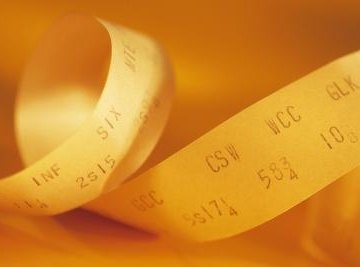
For many children and adults, fractions pose some difficulties. This is especially the case with improper fractions, in which the numerator, or top number, is larger than the denominator, or bottom number. Even when educators try to relate fractions to real life, comparing fractions to pieces of pie for example, improper fractions can be hard to conceptualize. After all, how can you have 10/2 of a pie? Converting these improper fractions to mixed numbers or whole numbers makes them easier to understand.
Pen-and-Paper Method
Divide the numerator by the denominator. Your quotient will have a whole number and, in some cases, some leftovers. For example, if your improper fraction is 15/2, divide 15 by 2. You get 7, with 1 left over.
Take the whole number of the quotient and write it by itself. In the first example, 15 divided by 2, the quotient has a whole number of 7. If your denominator divides evenly into the numerator, you are done. For example, if the improper fraction is 16/4, you divide 16 by 4 to get 4. 4 is the whole-number expression of 16/4.
Take the number that was left over when you initially divided the numerator by the denominator and place this number over the original denominator. With the example 15/2, the quotient was 7 with 1 left over. To express this improper fraction as a mixed number, you would write 7 1/2.
Calculator Method
Use your calculator to divide the numerator by the denominator. For example, with the improper fraction 40/3, you divide 40 by 3 and get 13.33333, with the 3s repeated to infinity.
Take the number before the decimal point, in this case 13, and multiply it by the denominator, in this case 3. Here, you would get 39.
Subtract this product from the numerator of the fraction. In this example, you would subtract 39 from 40 and get 1. This number is the "difference."
Write down the number that appeared before the decimal point when you divided the numerator and denominator. Take the "difference" and place it above the denominator. In this example, 40/3 becomes 13 1/3.
References
About the Author
Kat Black is a professional writer currently completing her doctorate in musicology/ She has won several prestigious awards for her research, and has had extensive training in classical music and dance.
Photo Credits
Comstock/Comstock/Getty Images
